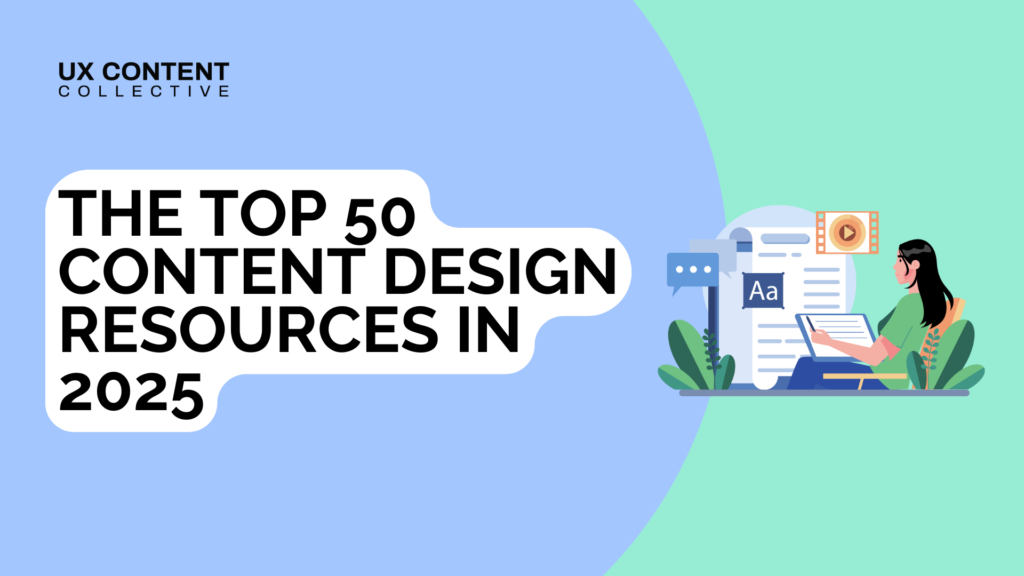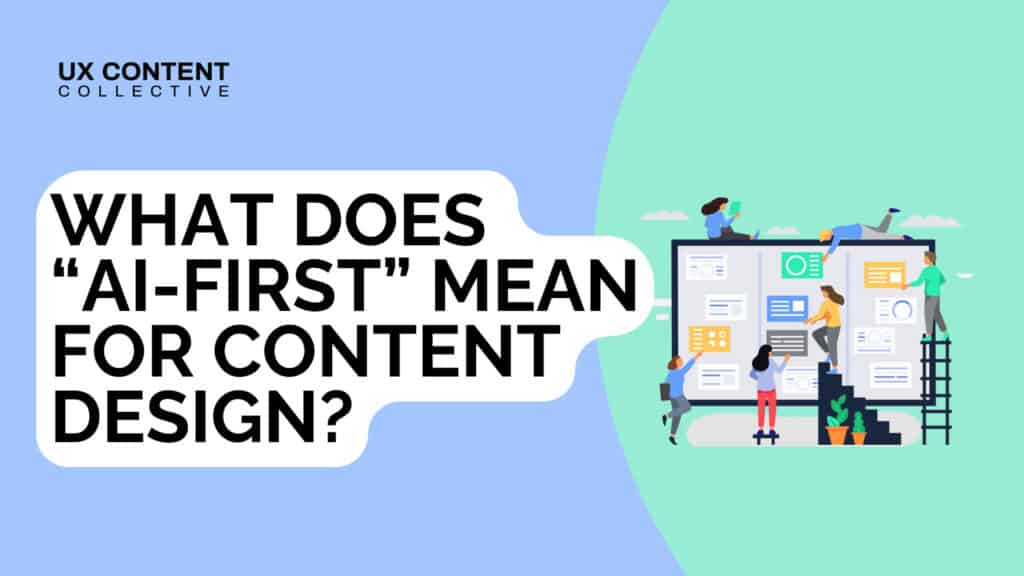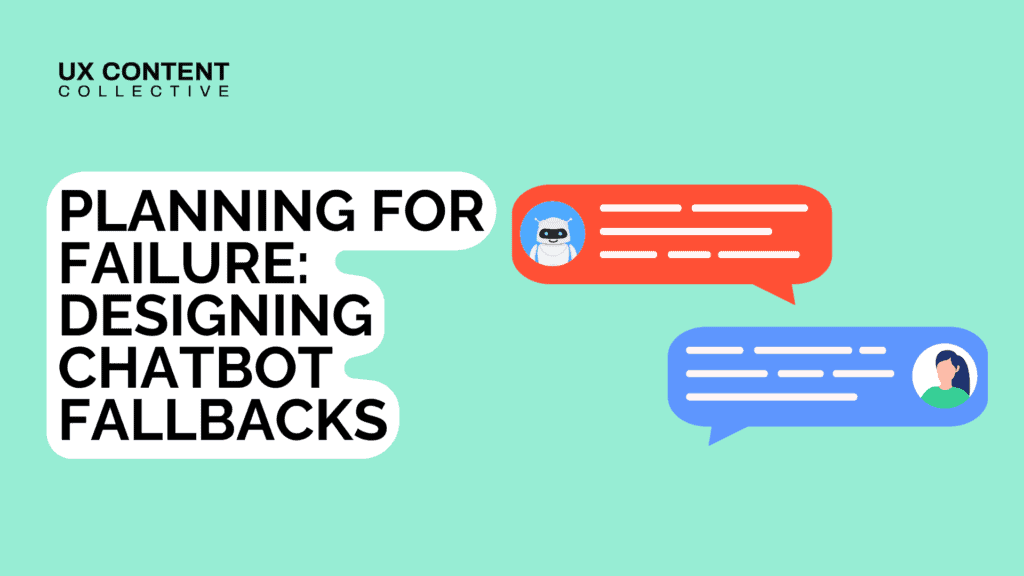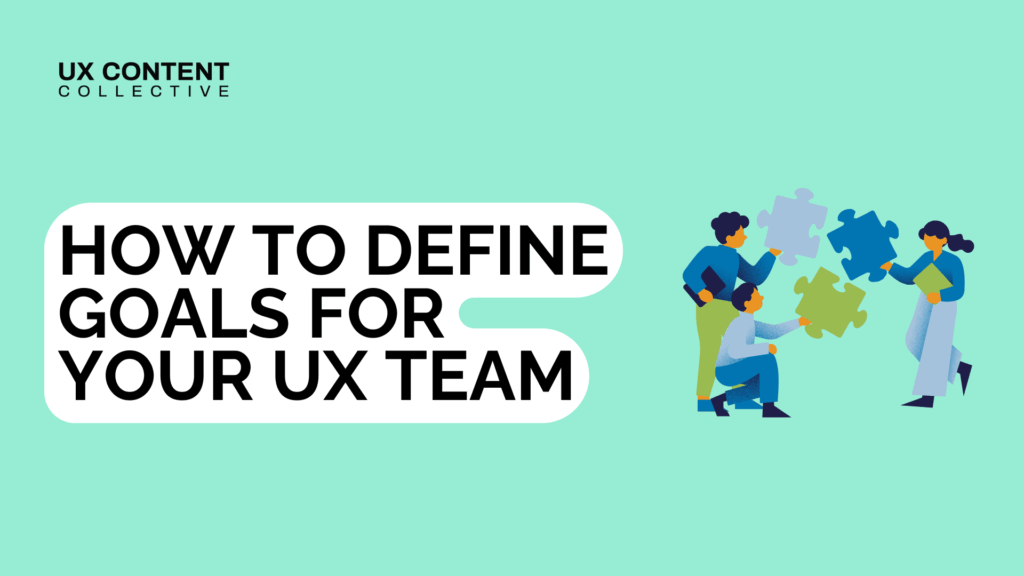
What does “AI-first” mean for content designers?

Patrick Stafford

Interested in AI and conversation design?
Explore our conversation design and AI training:

Interested in content design? Check out our complete guide to content design (and how it’s different from UX writing).
In March of this year, Shopify made a bit of a Splash when CEO Tobi Lütke released a memo suggesting the company would adopt an “AI-first” approach. Among other directives, he said there would be no new hires until any team could explain why AI couldn’t do the job instead.
It was a pretty extreme move (and some might call it rhetorically harsh) and it’s always difficult to judge how these sorts of announcements will impact the industry at large. So, for a few weeks nothing much happened. Until on April 29, Duolingo CEO Luis von Ahn also released a memo detailing a very similar strategy of his own:
The entire message is long, so I won’t quote the whole thing here. But these phrases stuck out to me:
- “When there’s a shift this big, the worst thing you can do is wait.”
- “AI isn’t just a productivity boost.”
- “Being AI-first means we will need to think much of how we work. Making minor tweaks to systems designed for humans won’t get us there. In many cases, we’ll need to start from scratch.”
- “AI use will be part of what we evaluate in performance reviews.”
- “AI use will be part of what we look for in hiring.”
There isn’t a third example of a company adopting this type of approach yet – but two is a pattern, so it’s worth wrestling with this shift in terms of UX writing and content design. Because while your current employer may not be thinking about this, your next one will, and the one after that…and so on.
I’m less concerned with whether this approach actually benefits these companies or not, and more about how we ought to be thinking about content design in general.
Let’s dive in.
Where is AI content design starting from?
In general, I’d say the industry is doing pretty well. A majority of content designers are experimenting with AI tools for at least brainstorming or manipulating their work for easy day-to-day productivity.
There’s an increasing number of content designers using techniques like custom instructions or chatbots, scaling their output to help more designers at once, and those who are working on training the models themselves at companies like Meta and Google.
The fact Button Conference is holding an entire day related to AI this year is another sign content design is taking this seriously.
But…I also think there’s an opportunity here. And we might be missing it. For content designers, this “AI-first” shift demands more than just awareness.
AI changes the nature of product development
It is very, very easy to now build out applications and prototypes without having any massive coding knowledge. And this goes beyond “vibe coding” using tools like Cursor or Framer.
Most content designers and UX writers don’t operate with that type of freedom. They work in mid-size or large organizations with existing structures, design systems, components, and other constraints (many of them interpersonal) that limit what and how they can do things.
However, that will begin to change.
As more companies adopt tools for development and UX teams that allow them to build faster, expectations for output will increase (as the Shopify and Duolingo memos point out). Instead of slow, deliberate cycles, teams will be encouraged to experiment, iterate, and ship at an unprecedented pace. As the technology matures, these tools will be connected to existing design systems making it easier for mid and large sized companies to adopt.
Without structured content systems in place, products risk becoming fragmented, inconsistent, and confusing for users. Clear content architecture, scalable patterns, and strategic messaging frameworks are no longer “nice to haves” – they will be survival mechanisms.
Therein lies both our opportunity and existential risk: we need to be able to maintain quality at a higher speed.
What does “AI-first” look like for content design?
We published a piece last year called “Content Design 3.0” where we outline our thoughts on what the next phase of the industry looks like, and we focus on 5 key principles:
- Dynamic systems over static deliverables
- Democratized content creation
- Development of era-defining technology
- Content as general design leadership
- Increased specialization
I want to focus on the first three: dynamic systems, democratized content creation, and era-defining technology.
Operating in an AI-first environment fundamentally changes the role of the content designer. It’s no longer sufficient to focus on crafting perfect copy for a single flow or screen. If content designers stay locked into that mode, they become production bottlenecks — unable to keep pace with the speed and scale demanded by accelerated product development.
To remain relevant and effective, content designers must shift their mindset from individual execution to systemic enablement. Our goal is twofold: empower scalable content production and safeguard quality across that scale.
The good news is that the techniques we need are the techniques the industry has been perfecting over the past 20-30 years.
Designing modular systems
Content designers must create structured, repeatable frameworks that AI tools and product teams can populate dynamically, without sacrificing coherence or user experience.
Take error messages as an example. Rather than writing dozens of one-off error messages for every edge case, a modular system would define a consistent structure: a simple explanation of what went wrong, why it matters, and what the user can do next. This structure can then be used across hundreds of scenarios, ensuring that users receive helpful, actionable guidance — no matter what part of the product they’re interacting with.
This type of modular thinking is not novel, it is not unknown. Do a quick search and you’ll find content designers doing it every day. But it is now more important. Modularity enables product teams to move faster without fragmenting the user experience. It empowers AI tools to extend content coverage without drifting into inconsistency. And it preserves the emotional trust that clear, structured communication builds with users.
Training AI systems to reflect human standards
Even the best modular systems will collapse if the AI populating them doesn’t understand the nuances of human communication. Large Language Models are powerful, but they don’t naturally grasp brand voice, emotional nuance, or accessibility standards. These must be taught and content designers are essential to that teaching.
Training AI systems involves much more than feeding them product copy. It requires examples, templates, evaluation systems, and guidelines that explicitly teach models how to behave.
With strong examples, a tuned AI can generate hundreds of on-brand variations without losing clarity or voice. Machine-readable style guidelines are equally critical. Traditional human-facing guides are too vague for AI. Instead, we need rules for punctuation, phrasing, formality, and inclusivity — rules precise enough for a machine to follow without guesswork.
If content designers don’t own this part of the system, the outputs will drift. Training the AI isn’t separate from content design, it’s content design at a new level of abstraction.
Again, this is nothing new. But I’ve spoken with many content designers working on training models at large companies, and it’s very telling that they’re closest to the content that’s used to guide models themselves.
Evaluation and oversight
Even with modular systems and well-trained models, human oversight remains non-negotiable. AI can generate well-structured, on-brand content at scale, but it doesn’t understand nuance, evolving social standards, or brand shifts. Without active human review, even good AI models will degrade.
Content designers must lead structured evaluation processes, setting clear frameworks for review:
- Does the content match the user’s emotional state?
- Is the tone appropriate for the context and brand?
- Is the message accessible and inclusive?
- Are legal and ethical standards met?
These metrics will change based on your own organization, your own needs, and a slew of other principles. Your job should be to explore them, define them, and take charge. Review checkpoints should be embedded into workflows, especially for high-risk areas like onboarding, transactional flows, and AI-driven recommendations.
Feedback loops are critical. AI outputs should be monitored in production, with user feedback and anomalies feeding back into retraining efforts. And real success must be measured: clarity scores, accessibility audits, brand consistency, and user trust signals like reduced support requests.
Why systems thinking is more important than ever
In an AI-accelerated product environment, speed without structure leads inevitably to chaos.
This is where systems thinking becomes not just useful, but absolutely critical. Content designers must approach their role as architects of scalable content ecosystems, not as one-off writers of screens or flows. Systems thinking means zooming out: looking at the entire experience and designing reusable, modular content structures that AI and other teams can reliably populate without constant manual intervention.
When new features are developed and shipped rapidly — aided by AI tools — the volume of content multiplies exponentially. The cost isn’t just messy interfaces — it’s erosion of user trust, increased cognitive load, and ultimately, product failure.
Again, these types of skills needed to counter this aren’t new. They just need to be prioritized:
- AI literacy: Understanding how models work, designing prompts, and critically evaluating outputs.
- Cross-functional collaboration: Partnering with engineers, researchers, product managers, and legal teams.
- Content governance: Leading sustainable quality assurance practices at scale.
- Change leadership: Advocating for responsible, user-centered AI practices in organizations.
Content design has a massive responsibility
I don’t know what’s going to happen next. More companies might reject the Shopify and Duolingo approach. The AI hype might die down.
But even if it doesn’t, all of these skills are worth learning and adapting. Why? Because it ensures content design can have impact and influence at scale, beyond a single screen where our value is limited.
As development speeds up, complexity rises, and content volume explodes, content design becomes the safeguard that protects usability, trust, and humanity.



